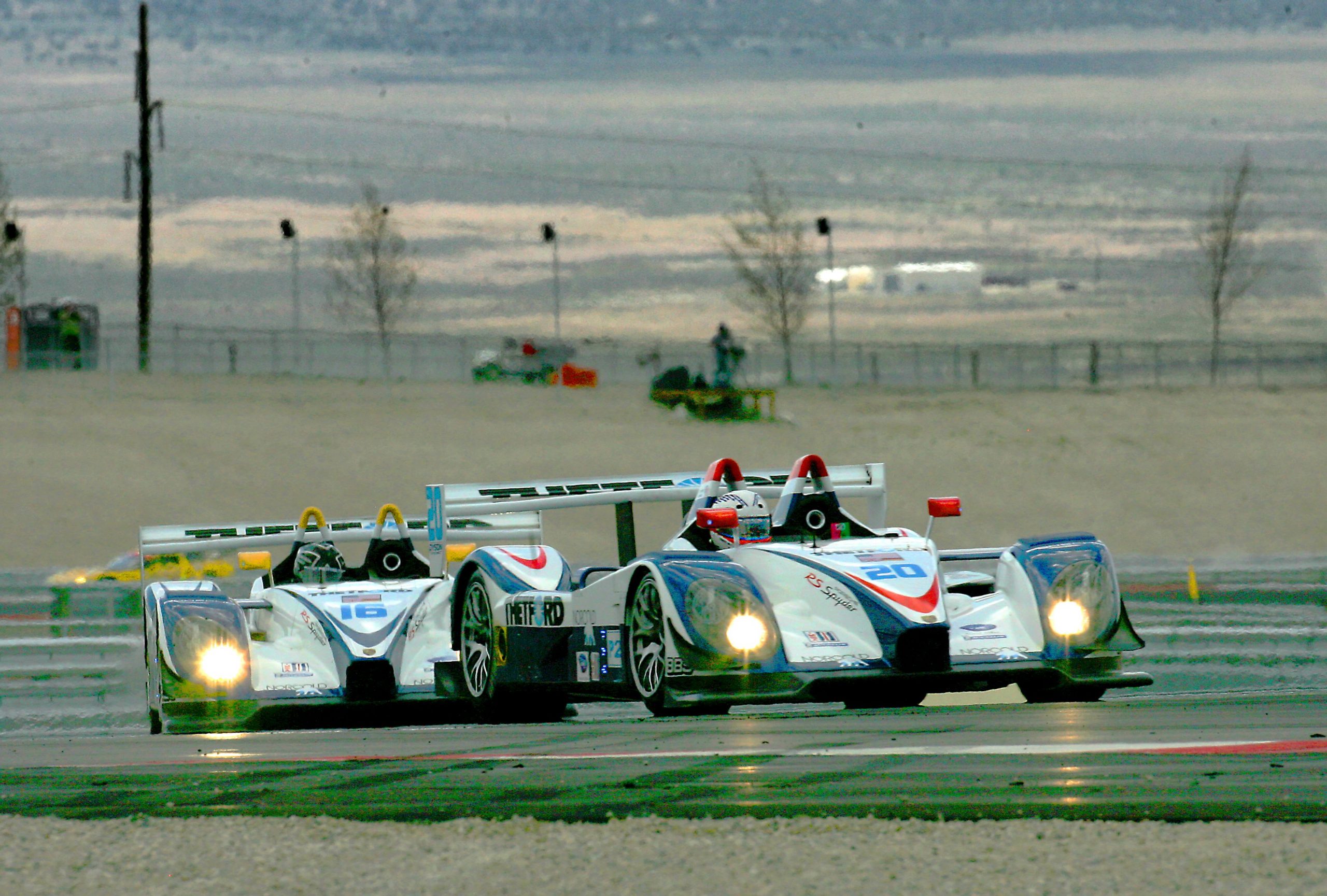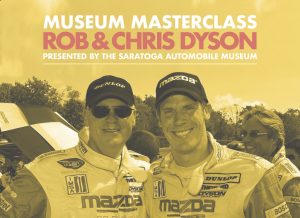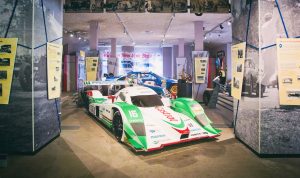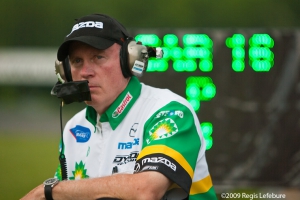Researched and Written by Karen Earl
For the teams of the American Le Mans Series, the March-to-October season is a cycle of building, traveling, testing, racing and re-building. Time, manpower, money and other resources are limited, and the focus is by necessity on the next on-track session, the upcoming race, the year’s championship. The teams use the period between one season and another as both a time to wind down one campaign and the opportunity to prepare for the next.
Chris Dyson, who both manages and drives for Dyson Racing, explained, “The past two off-seasons have really been off-seasons in name only, to be honest. So much needs to happen for the next year, and getting the pieces in place is so important. But it’s that sense of urgency, of having the pressure to deliver in incredibly tight timelines that makes racing so uniquely special and rewarding. The clock never stops, and you can always be doing something towards the effort.” For Dyson Racing, a pillar of the ALMS, the recent “downtime” was busy with the usual plans and work lists, as well as two significant and unexpected developments.
Dyson Racing’s 2006 season ended with a surprise announcement at the year’s Laguna Seca finale: James Weaver, who had driven for the team since 1987, gathered the crew together in pit lane as the checkered flag flew and told the team he was retiring back to his home and family in England. A master of car setup, a fearless qualifier and a favorite throughout the sport for his wit and sportsmanship, Weaver would be sorely missed on the team and in the paddock.
A second substantial change was put in motion when Porsche approached the team at the end of the 2006 season about campaigning a pair of Porsche RS Spyders for 2007. The cars were run exclusively by Penske Motorsports in 2006, and swept all the championship titles in the class. Now, Porsche was ready to make the RS Spyders and their 500-horsepower engines, identical to those run by Penske, available to customers. The company was eager to have the cars run by a team of Dyson Racing’s caliber, and there were many attractive and compelling reasons for renewing a relationship that dates back over 20 years.
Dyson Racing fielded three Porsche 962s during IMSA’s Camel GT prototype era, scoring 12 wins in six seasons. Rob Dyson’s first 962 was chassis #101, and many race fans remember its dramatic debut in Dyson livery, when Drake Olson drove it to a thrilling victory in the 1985 Lime Rock Park race. Chassis #101 still sits in the Dyson Racing shop today, and five of the mechanics who wrenched and welded and polished the Dyson Porsches still wear Dyson Racing uniforms today: Matt Charland, Tony DiMarco, Lou Murasso, Boz Pultz, and Jim Wirehouse.
Last season officially ended at the ALMS banquet in Monterrey, California. Then team manager Randall Kelsey and the rest of the crew loaded the trucks for the return trip to the shop in Poughkeepsie, N.Y. While the rest of the crew flew home, Vince Carr drove the #16 car trailer east. Carr wasted no time on the journey; as he put it, “I was on a mission to get home, and I had bow hunting on my mind.” The pace of the season is so busy that team members and their families generally plan vacations for the quieter winter months. “The best thing about the off-season is that I get to spend more time with my family,” said Carr.
Already at his own British home was team driver Guy Smith, whose season had been cut short by a chassis-damaging accident in the #20 car at Petit Le Mans in September. As the rest of the team and the sports car world buzzed about Weaver’s retirement, Smith and his wife Alicia celebrated the birth of daughter Bronte on October 15th. “These last months have been life changing and challenging – every day has been like a Sebring 12 Hours!” said Smith recently. “But it’s been lots of fun, and soon Bronte will make her first ever trip…to Sebring!”
One of the most pressing issues for the off-season was replacing Weaver in the cockpit. It was an important decision, and one with an easy solution: ace Andy Wallace, with an amazing sports car record and a long history with the team, signed on to partner Butch Leitzinger in the #16 Thetford/Norcold car. With Dyson and Smith in #20, the team would be a double-barreled threat.
As always, the first part of the off-season was spent repairing, repainting, and reorganizing. Except for sets of “roll arounds” so the cars could be moved in the shop, Michelin had taken all the tires after the final race. Jim Wirehouse, the team’s tire technician, cleaned and inspected all the wheels to make sure none were damaged.
Team public relations representative Brian Wagner welcomed the opportunity to work on long-range projects and plan for the next year, but he first sent out press releases about Weaver’s retirement, worked on a nine-page tribute to Weaver, and went through 3,000 photos to put together a retrospective CD for the team Christmas party. The team’s annual party is a highlight of the team’s calendar, and this year’s gathering was even more eagerly anticipated than usual, with the team’s friends and former drivers included to give Weaver a proper send-off.
The renewed relationship between Dyson Racing and Porsche was officially announced at the Porsche Cup Awards Dinner in mid-December, and the team’s trucks were on their way to be painted the following week. The announcement brought a flood of new requests to Wagner’s desk, for driver interviews, appearances, autographs and photos. He began to update the website and photo archive, and to work on a new press kit, and coordinated activities with Porsche, Michelin and the ALMS.
“The first part of the off-season was spent wondering what the next year would bring,” said Leitzinger. “Then, when we found out about the Porsches, we spent the rest of the time being incredibly excited and eager to play with the new cars”
Before Christmas, several of Dyson Racing’s technicians traveled to the Porsche motorsports facility in Weissach, Germany to receive instruction from Porsche about the RS Spyder, to ensure they would hit the ground running at the first test. Mike White and Cliff Hauck studied how the gearboxes are assembled and what problems to look for. Darren Arns, Scott Halupke and team engineer Peter Weston learned how the entire car works and how to do a setup on the car. Vince Wood, the data acquisition engineer, worked with his counterparts at Porsche. The crew was there to watch Porsche driver Timo Bernard complete a “shakedown” run with the car, and to help load it for the trip across the Atlantic.
The team was scheduled to come home on December 21st, but fog in London delayed their return until the 22nd. After the holiday break, work started again. The first Spyder was due to arrive in mid-January, and even the tools used to work on the cars had to be changed. The Lolas the team had run for five years had used standard tools, while the Porsches required metric tools. The team painted and made new pit equipment, and emptied out the parts cabinets so the new parts could be inventoried and stored in the appropriate locations. The mechanics studied the manuals from Porsche.
Peter Dyson, who manages the visual image of the team, had already begun to work on many new designs incorporating the Porsche RS Spyders and their silhouettes: paint schemes for the cars and trucks, team clothing, firesuits, “hero cards” to hand out at the races, and www.dysonracing.com, the team’s website.
Throughout this time, the Dyson team drivers kept to their own fitness regimens, and tried to fit in some non-racing travel.. Chris Dyson said, “I’ve been training as hard as I normally do in the off-season, but it’s really with a fresh outlook on things as this year promises to be very exciting.” The Dyson family did manage to get away to the Caribbean for a week around Christmas. Smith’s trains with a former paratrooper, and Wallace managed to fit in a ski trip to the French Alps in among the 18 days of testing and 11 transatlantic flights he’s taken since the end of last season.
The team was eager to run the car at the annual Wheels Down Winter Test January 22-24, and just a few days after the first RS Spyder cleared customs, it was loaded for the trip to Florida,. There, the team drivers and crew, joined by Sebring guest driver Andy Lally, stood in the pit lane at Sebring, and watched Chris Dyson fire it up and head out on to the circuit. Later that morning, when Dyson stepped from the car, he was very satisfied. “Porsche has put an enormous amount of work in the car, there are no details missing,” he said. “It is absolutely gorgeous, a beautiful car to drive. All the systems are integrated and all of the fundamentals, the engine, and the aerodynamics are spot on.”
The #16 Thetford/Norcold RS Spyder ran 726 trouble-free miles over the three-day test, and on the final day, Andy Wallace set the fastest lap time for any car at the test. Wallace, too, was enthusiastic after his first stints in the car: “Porsche has done an absolutely amazing job,” he said. “It’s absolutely the best car I have ever driven. Most cars have a few good points and a couple bad points, but this car is just good everywhere.”
The RS Spyders impressed the men who wrench the cars as well: “Everything has its proper home, “ explained #16 car mechanic Boz Pultz. “When you are running one kind of engine and a different chassis, you’re always trying to find a better home for things, putting together makeshift bracketry and plumbing. Everything was designed and thought out together for the Porsches.”
The second car arrived in early February, and the team joined Penske Racing for a test in California at Willow Springs Racetrack. With two cars now, the drivers were able to get more track time, and what they learned impressed them. Leitzinger’s high expectations for the new cars have been met and even exceeded: “The car is fantastic,” he said. “The anticipation for the new season is so high; everyone on the team, and I mean everyone, is really looking forward to going racing. The Porsche people have been fantastic to work with and incredibly helpful. The moment there was a single small problem with the car, it was immediately fixed.”
Everyone in the Dyson Racing shop continued working flat out preparing for the Sebring season-opener,: going through the cars and gearboxes, painting the cars and spares, practicing pit stops, making more spares, working on pit equipment. The demands on the team’s public relations continued, with deadlines approaching for printing hero cards and press kits, and increasing requests for appearances. Kelsey and business manager Liz Schukal made the complicated flight and hotel reservations for the upcoming year, and then Schukal went on maternity leave and gave birth to son Derek on February 15. Then on February 22, Carr and his wife Meg welcomed their third child, Shane Michael.
Kelsey is impressed with the new car and with Porsche. “Porsche has left no stone unturned,” he said. “It is obvious to see why they are the world’s premier car manufacturer. The personnel and level of support they have provided is beyond reproach.”
“I think the racing, particularly in P2, will be some of the best sports car racing in years,” predicted Smith. p> “We are in the best position to win a championship in years, and we are all relishing the challenge of achieving that with Porsche,” said Dyson, “and it’s going to be a great fight all year long. When you look at the competition in the prototype division, the depth of talent and the quality of the teams is as good as it’s ever been in the ALMS. I am thrilled to be racing in the ALMS this year because the series is the place to be in North American road racing, and it’s on the verge of doing some truly great things. I think that this year is going to be one of the finest years in ALMS history.”



